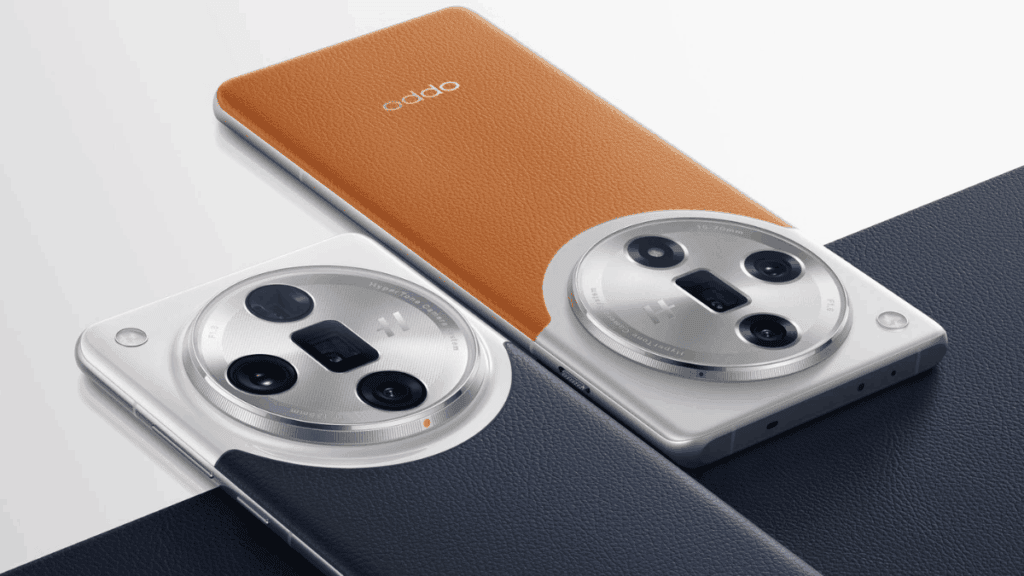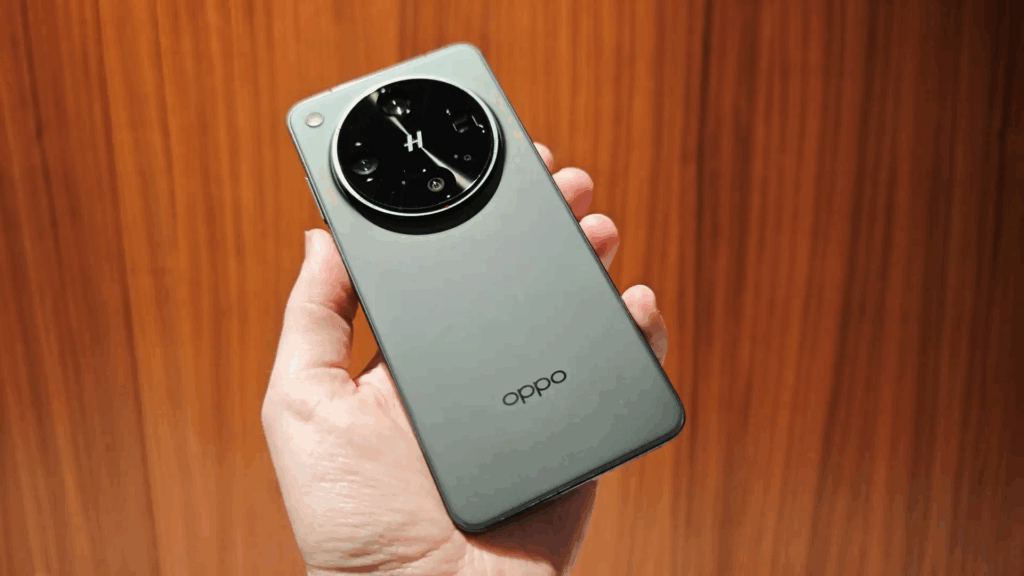The Oppo Find X8 Ultra is Oppo’s latest flagship powerhouse, arriving with a lot of buzz and a spec sheet that screams high-end. It’s equipped with cutting-edge silicon, a quad-camera array featuring a 1-inch main sensor, and the kind of AI-driven features that seem designed to impress on paper. For fans of Oppo’s past innovations, this phone initially looks like a serious contender for best Android device of the year.
But peel back the layers and things start to fall apart.
Despite its impressive specs, the Find X8 Ultra is riddled with drawbacks that make it a tough sell, especially outside of China. From its frustrating software quirks and underwhelming hardware decisions to regional limitations and camera shortcomings, this phone feels like a step sideways, if not backwards, in several key areas. Below, we break down the most significant cons of the Oppo Find X8 Ultra, so you can decide if this flagship is worth the trouble or better left on the shelf.
Table of Contents
Limited Availability and Regional Restrictions
Let’s start with the biggest brick wall: you probably can’t buy this phone easily, and if you do, you might regret it.
The Find X8 Ultra is not coming to the U.S., the UK, or most global markets. Oppo has chosen to keep the phone almost entirely locked to mainland China, which immediately alienates a massive chunk of potential users. That means no official support, no regional updates, and potentially no warranty coverage unless you’re buying directly within China.
Even if you’re determined to import it, there are more hurdles. Many of the AI features, which Oppo heavily advertises, don’t work properly on the Chinese ROM. Voice recognition, translation, and other contextual tools tied to region-specific services are crippled or completely inaccessible.
The issues don’t stop there. The phone only supports Chinese eSIM standards, making it incompatible with many third-party or international eSIM carriers. That’s a bizarre move in 2025, especially when rivals like Apple and Samsung offer full eSIM flexibility.
Lastly, if you use a Wear OS smartwatch, compatibility might be spotty. Several reports indicate pairing issues and limited functionality, particularly with global watch models that aren’t tailored to Chinese Android builds.
Bottom line: Unless you live in China or are comfortable dealing with firmware flashing and constant workarounds, the Find X8 Ultra is more of a headache than a flagship.

In previous years, Oppo’s Ultra models had a distinctive aesthetic, sleek curves, bold camera modules, and a form factor that stood out. But with the X8 Ultra, the company took a hard left turn into generic territory.
The phone sports a boxy, flat-edged design that could easily be mistaken for a Xiaomi, Vivo, or even a budget device from Realme. It’s tame to a fault, a surprising downgrade in identity for a brand that used to set trends.
Worse still, Oppo has removed the beloved alert slider, a tactile fan-favorite that users appreciated for its iPhone-like convenience. In its place is a new shortcut button, but calling it an “upgrade” would be generous. It’s not fully customizable, meaning you can’t just program it to open any app you want. You’re stuck with preset functions like launching the camera or toggling AI modes, whether you care about them or not.
Then there’s the “quick control button” (another camera shortcut, clearly inspired by Apple’s shutter logic). It’s not only unhelpful, but prone to accidental touches. It also only functions in landscape mode, and even then, its zooming ability is limited and lacks precision. You can’t switch between camera modes, adjust exposure, or even toggle between lenses from it, even in Pro mode.
So, you’re stuck with more buttons doing less, and a design that lacks any real wow factor.
ColorOS 15: The iOS Clone Nobody Asked For
Oppo’s ColorOS 15 is slick at first glance, but spend a few minutes navigating it and you’ll realize it’s an unapologetic clone of iOS, and not in a good way.
From the control center layout and notification management to the camera UI and lock screen widgets, it all feels like Oppo sat down with an iPhone and just said, “Let’s copy this.” This might appeal to users who want the iOS experience on Android hardware, but for most tech enthusiasts, it’s both lazy and annoying.
Take the so-called “AirDrop clone”, a supposed native file-sharing feature. It only works with iPhones if you first install a dedicated app on the iPhone. That completely defeats the point. Apple’s AirDrop works seamlessly because it’s truly native. Oppo’s imitation is like gluing a new name on a third-party app and pretending it’s innovation.
The camera interface also feels clunky, especially compared to rivals like Vivo’s X200 Ultra. It lacks intuitive toggles, buries Pro controls too deep, and offers limited real-time customization. Even regular users may find the layout inconsistent, especially when switching between photo, video, and AI modes.
For a premium phone, the software experience feels confused and derivative, and that’s a huge miss.
Photo Performance: Inconsistent and Artificial

On paper, the Find X8 Ultra’s camera array is a monster: a 1-inch main sensor, periscope zoom, ultrawide, and portrait lenses. But in practice, the results are uneven, and in some cases, disappointing.
The main camera’s super shallow depth of field looks cinematic in ideal conditions but often causes focusing issues, especially when shooting close-up portraits or moving subjects. That beautiful bokeh effect? Sometimes it just blurs the wrong parts of your image.
Photos also suffer from over-processing. There’s a noticeable amount of sharpening and saturation, likely the result of aggressive AI tuning. While this might look good on social media, it kills natural textures and can make skin tones look painted.
The 120x zoom sounds impressive, but at that extreme range, AI kicks in hard, and it shows. Faces get warped, lines become fuzzy, and details start to resemble watercolor paintings. It’s a gimmick more than a tool.
Even selfies, which you’d think Oppo would have nailed by now, are a mixed bag. The front-facing camera tends to over-brighten images, washing out facial features. It also has a slow shutter speed, which results in occasional blurring, especially indoors.
Worse still, the 23mm main lens, while technically sharp, has a distorted focal length for people, stretching faces unnaturally in edge-frame shots. The portrait lens (70mm) doesn’t help much either, feeling just a bit too wide to flatter the subject.
Overall, the camera is great for landscapes, but inconsistent for people, which is a problem on a phone trying to lead in mobile photography.
Video Limitations Hold It Back
For a phone that’s all-in on camera hardware, the video side of the Find X8 Ultra lags behind competitors in noticeable ways.
The selfie camera suffers from poor stabilization, producing shaky footage even in well-lit environments. The ultra-wide lens fares even worse, with less-than-stellar HDR handling and occasional frame stutters, especially when recording while walking.
Night video is a particular pain point. Lens switching becomes jittery, especially when transitioning from the main to zoom lenses. You’ll also see sharpness drops and color shifts, which cheapen the whole footage.
The ultra-wide camera, which should be a strength, is practically unusable in low light. Videos are grainy, detail is lost, and any sort of movement causes smear and ghosting. It’s like stepping back several generations in image processing.
Then there are the format limitations. You can’t shoot in 24fps, a staple for cinematic recording. You can’t record log footage for color grading. And you can’t even shoot 4K at 120fps, despite other flagships offering it in 2024.
If you’re serious about mobile videography, this phone will frustrate you fast.
Outclassed by the Competition

If you’re spending close to $1,000–$1,200 (depending on import costs), you’d expect the Find X8 Ultra to be the best Android camera phone on the market.
It’s not.
That crown currently belongs to the Vivo X200 Ultra, which beats Oppo’s flagship in key areas: zoom quality, ultrawide video, night mode performance, and portrait clarity. Vivo’s imaging software is also better tuned, delivering more natural skin tones, consistent exposure, and pro-level tools without requiring third-party apps.
Meanwhile, Samsung’s Galaxy S24 Ultra offers a more polished ecosystem, global support, and software stability, while Google’s Pixel 8 Pro delivers unmatched computational photography, especially for point-and-shoot users.
Oppo’s device is left sitting in a weird middle ground: too expensive for casual buyers, too inconsistent for pros, and too region-locked for global appeal.
Final Thoughts
The Oppo Find X8 Ultra could’ve been a global success story. It has the hardware to impress, and on paper, it competes with the best. But Oppo undermines its own efforts with poor availability, frustrating software choices, and lackluster user experience.
It’s a phone that demands flagship money but returns a fragmented, inconsistent experience, one that’s hard to recommend unless you’re an Oppo loyalist living in China.
Nevertheless, if you’ve weighed all these drawbacks. Still wish to go with the purchase, congratulations! You’re making a considered decision that you won’t regret.
Reference:
https://www.youtube.com/shorts/MxXMywM77Ao
https://www.youtube.com/watch?v=p24qhUFIe68&pp=ygUST3BwbyBGaW5kIFg4IFVsdHJh
https://www.youtube.com/watch?v=Jem6iIONR-o&pp=ygUST3BwbyBGaW5kIFg4IFVsdHJh
https://www.youtube.com/watch?v=9jCjEJ_YJdg&pp=ygUST3BwbyBGaW5kIFg4IFVsdHJh
https://www.youtube.com/watch?v=NyyaxAUYRrY&pp=ygUST3BwbyBGaW5kIFg4IFVsdHJh
https://www.youtube.com/watch?v=Z0I_ji5E4P4&pp=ygUST3BwbyBGaW5kIFg4IFVsdHJh
Oppo Find X8 Ultra

The Oppo Find X8 Ultra is Oppo’s latest flagship powerhouse, arriving with a lot of buzz and a spec sheet that screams high-end. It's equipped with cutting-edge silicon, a quad-camera array featuring a 1-inch main sensor, and the kind of AI-driven features that seem designed to impress on paper. For fans of Oppo’s past innovations, this phone initially looks like a serious contender for best Android device of the year.
Product Currency: USD
Product Price: 960
Product In-Stock: InStock
4


